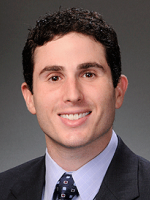A recent discovery order from the United States District Court for the Northern District of California suggests that employers seeking to prevent plaintiffs with related lawsuits (i.e., separate lawsuits, but arising from the same circumstances) from sitting in on one another’s depositions, or reading one another’s deposition transcripts, will need to provide a “particular and specific” basis for doing so.
In its motion for a protective order under Federal Rules of Civil Procedure 26(c)(1)(E), the employer argued that allowing each plaintiff to be present during the others’ depositions, or to read one another’s deposition transcripts, would give the plaintiffs an opportunity to compare their statements and alter them to be consistent. The Court rejected the employer’s argument, reasoning the employer had not made a “particular and specific demonstration of fact sufficient to warrant” a protective order, and citing several examples where the requisite showing had been made. For example, the Court referenced a case where a supervisor was excluded from the plaintiff’s deposition after the plaintiff, who had a history of depression, showed his testimony and health would be affected negatively by his supervisor’s presence. See Monroe v. Sisters of Saint Francis Health Servs., Inc., 2010 WL 4876743 *3 (N.D. Ind. 2010). The Court also noted the employer could still cast doubt on the credibility of the plaintiffs’ testimony in the event it appeared to be tainted by their presence at one another’s depositions or from having read one another’s deposition transcripts.
While not binding precedent for other California federal courts, this discovery order demonstrates the degree to which employers must prove the potential harm in having multiple plaintiffs present at one another’s depositions, even if they are plaintiffs in separate lawsuits.
Click below for a copy of the discovery order.





 />i
/>i
